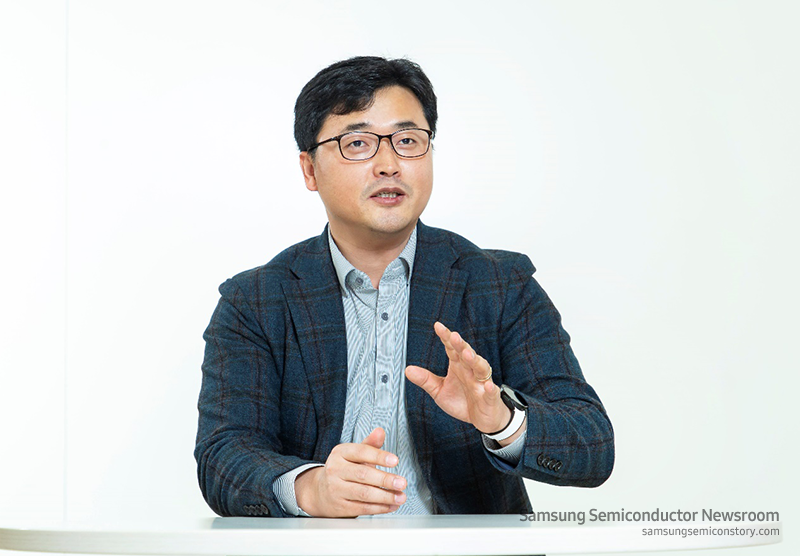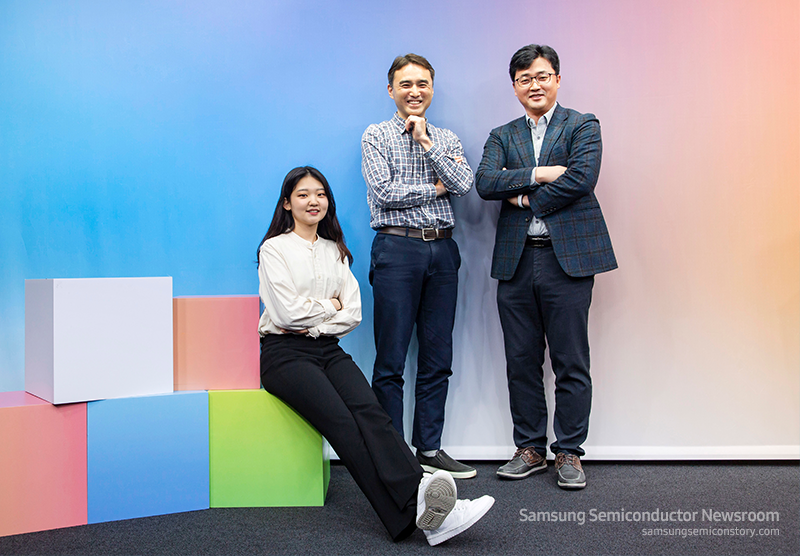The debut of the ISOCELL HP2 with the Galaxy S23 Ultra
In January 2023, Samsung unveiled the ISOCELL HP2, a new 200-megapixel (MP) image sensor with enhanced pixel technology for breathtaking mobile photography. At the Galaxy Unpacked event in February, Samsung launched the new Galaxy S23 Ultra that features the ISOCELL HP2. With a 200MP resolution, users can capture images with incredibly high resolution and epic details. ISOCELL HP2 opens up whole new possibilities for both professional and recreational photographers who want to take their photography to the next level.
What’s new: Key differentiators
Kyungho Lee, Vice President of Pixel Development Team says, “We had to dramatically increase the pixel storage capacity of ISOCELL HP2 in order to reduce the pixel size by about 56% compared to the 108MP sensor used in the previous Galaxy S series, while preserving image quality and enabling auto focus on all pixels.”

The innovative new technology developed for this purpose is the ‘Dual Vertical Transfer Gate’, which efficiently transfers a significant amount of charge built up in the photodiode to the circuit through two vertical gates, and its benefit is that it can produce images with no ghosting and a wide dynamic range of brightness.
From a design perspective, the high pixel count and frame rate of ISOCELL HP2 required a circuit design that could work at extremely high speeds to actualize the frame rate, which is the rate at which succeeding images are captured or duplicated by the sensor.
Seungjin Lee from Sensor Design adds, “A significant boost in analog-to-digital conversion (ADC) was crucial. Our developers devised a method to overcome this obstacle and applied it to ISOCELL HP2 for the first time, allowing us to anticipate and correct potential mismatches between ADCs in advance. As a result, we were successful in achieving all of our goals for the image sensor’s performance and reliability.”
.
More pixels. Epic details.
The main benefit of ISOCELL HP2 is that it expands users’ photo and video-taking options and opportunities. The smartphone with 200MP camera has a 12MP mode by default, so users have the option to switch to 50MP or even 200MP photographs depending on their tastes or the lighting conditions.
ISOCELL HP2 features Tetra2pixel technology, which can group 4 or 16 nearby pixels together depending on lighting conditions to produce bright and sharp images even in low-light conditions while maintaining the exquisite detail that big-pixel products are known for.
Soyoon Choi from Sensor Marketing Team remarks, “We are now moving beyond 4K (about 8MP) era and transitioning into 8K (about 33MP) era, where the ultra-high resolution image sensor can enable you to shoot high-quality 8K video with brighter colors and less angle-of-view loss in the palm of your hand.”
.
Technical hurdles and uncompromising innovation
Samsung continues to innovate with ultra-high resolution image sensors in spite of escalating technical challenges as the pixels become ever finer.
Kyungho says, “We are aiming for more pixels than the 576 million known to be the maximum effective pixels in the human retina.”
The idea that pixel shrinking has reached its limit has been around for a while, but Samsung has continued to advance its ISOCELL technology with a belief that there are no limits to technology and is creating new and cutting-edge technologies. “At Samsung, we devote all these efforts to deliver a camera experience that enables all mobile users to capture their precious moments and priceless events as vividly and clearly as if they were seeing them with their own eyes,” said Kyungho.
“In order to thoroughly evaluate the image quality, we have been working with experts to improve the objectivity of numerical outcomes of image quality evaluation criteria and the results from a visual recognition standpoint since the initial stage of algorithm development,” Kyungho goes on to say, “As one of the team members who participated in the evaluation process, I would say it is one of the best ultra-high resolution image sensors we have ever released.”
The team has achieved ISOCELL’s top-class image quality possible at 200MP by dramatically increasing the number of electrons that can be packed into each pixel.1 A new architecture that reduces noise even at 50MP and 12MP enabled an excellent image quality in both bright and dark environments.
Moreover, focusing is fast and precise as the auto-focus function fully utilizes all 200 million pixels for phase detection and the increase in electron capacity per pixel delivers outstanding HDR performance.
Seungjin says that it was quite difficult to maintain the strict development timetable and meet the customer’s expectations at the same time. He goes on to say, “We were able to meet the deadlines and achieve all the desired performance outcomes by properly allocating focus and resources to high-priority objectives. The team did have some difficulty finishing the demanding tasks on time, but we made it happen as a team thanks to an excellent teamwork.”
Kyungho also recalls, “We wanted to ensure the best performance in every area and deliver optimal user experience to the customers. It was not an easy task, but we were able to overcome the challenges and find the optimal solutions with the help of other teams inside the organization, teamwork, and communication.”
.
Growth prospect
The global market for image sensors with more than 100MP is anticipated to expand. Samsung intends to further solidify its market leadership in the ultra-high resolution image sensor category with its product lineup including from 108MP to 200MP image sensors.
Image quality is the most crucial component of an image sensor, and new materials and architectures, noise-reduction transistors and algorithms will improve quantum efficiency in the near future. These advancements will enable us to further enhance the expressiveness of high dynamic range, reach higher processing speeds and produce sharper and more detailed resolution beyond what the human eye can see.
Samsung will keep up its two-track approach of big pixels and small pixels as it continues to innovate and deliver its products that exceeds the market expectations. Furthermore, Samsung expects that image quality in low-light conditions and HDR performance will remain as a crucial factor for delivering unique user experience in the future.
Soyoon Choi predicts, “If this trend and evolution continue, we’ll see amazing image sensors which perfectly mimic the human eye not only in terms of detail expression, but also dynamic range and color reproduction in the near future.”
Seungjin Lee stresses that high dynamic range (HDR) is a hot topic from UX perspective, and many organizations are studying and developing various technologies for HDR. He predicts, “Just like the number of pixels, HDR will become increasingly important as one of the components of an image sensor and its performance will continue to improve.

1 Compared to its predecessor built with single vertical transfer gate technology.